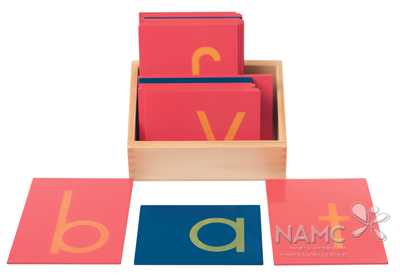
In a previous blog, we discussed the value of inclusion and how Montessori’s tenet of following the individual needs of the child makes it inherently inclusive. The Circle of Inclusion Project (University of Kansas) and Raintree Montessori (Lawrence, Kansas) listed 11 specific ways in which Montessori education addresses the needs of all children, including those with disabilities. Included in this list is “The classic Montessori presentation.” In today’s blog, Michelle kindly shares her classroom experiences to provide real-life examples of how Montessori meets that specific goal.
One of the main differences between the Montessori method and conventional education is in the delivery and presentation of information. Conventional education methods rely mainly on delivering information through teacher-presented lectures. Even though more emphasis is now placed on active learning, the majority of classroom time is spent on passive learning and lectures.
The traditional teacher-centered lecture model is drawing more and more criticism. The learning is delivered in a predominantly auditory setting, and students are expected to sit still, be obedient, be quiet, and take notes. The lecture method does not take into account students who may learn differently than others, in particular those who may have auditory-processing challenges, dysgraphia (the inability to write), or ADHD, or who are on the autism spectrum.
The Classic Montessori Demonstration: The Circle of Inclusion
The Montessori environment is a student-centered learning environment, taking into account how students learn, not just how content is delivered. Montessori teachers practice content delivery using as few words as possible with a three-period lesson. The iconic Montessori three-period lesson was actually developed by Edouard Seguin, a 19th century French physician who worked with children with special needs. Where conventional lessons breed passive obedience, the three-period lesson seeks to improve cognitive ability while developing self-reliance and independence.
The Three-Period Lesson
1
Naming — This is…(a triangle; a delta; etc.)
2
Association — Show me…(the triangle; the delta; etc.)
3
Recall — What is this?
Teaching Ani to Read
Ani was almost 8 years old when she entered my lower elementary classroom as a first year student. We were concerned for Ani went she first came to our school. She had challenges making friends and interacting positively with her classmates.It took some time, but we discovered that Ani’s social difficulties were a defense mechanism to cover a secret she did not want to share, even with her teachers: Ani could not write or read. She could not write her own name, remember letter sounds, or recognize letter symbols. Her fear of being discovered and her frustration with her own inability made her defensive. Trying to scare people off was her effort at self-preservation.

Thankfully, being in a Montessori classroom meant that Ani had the materials and the guide (me) she needed to help her overcome her challenges with language. Starting with a key presentation from the early childhood language program, I invited Ani to work with the Sandpaper Letters, presenting the letters “m,” “a,” and “s.” Although Ani had used these materials when she was younger, she was eager to work with them again now. She sat quietly as I began the three-period lesson. I slowly traced the first sandpaper letter with my primary fingers. When I finished tracing, I looked her in the eye and pronounced the letter sound /m/. I repeated this process two more times with “m,” and then moved the letter out of the way. I introduced the letters “a” and “s” in the same way, tracing the Sandpaper Letters and saying their phonetic sounds.

We then moved on to the second phase of the three-period lesson. Using the letter sound rather than its name, I asked Ani, “Show me /s/.” She smiled and pointed to the letter “s.” “Show me /a/”. Oops! She pointed to the “m.” Knowing how easily she could become frustrated, I simply smiled and thanked her for the lesson and told her we would continue another day. Then, we put the work away.
The three-period lesson allows the teacher to immediately assess the understanding of the content being presented. Stopping at the point of frustration allows children to make mistakes without fear or stress. They know they will never be asked to demonstrate more than they are capable of understanding at any given time.
The next day, we began again, starting over at the first period. When Ani had successfully mastered the second period, we moved on to the third — the recall phase, which is the demonstration of mastery.

Teaching Ani to read was a slow process and we had a few set-backs along the way. However, the three-period lesson allowed us to work together at her pace, and ultimately to be successful. Ani was an active participant in her own learning, which inspired her to learn more and gave her the self-confidence it took to continue when things were tough. As she became a successful learner, she no longer needed the defense mechanisms she was using at the beginning of the year and her social challenges became fewer. The student-centered Montessori learning environment answered her needs both cognitively and developmentally.
As much as possible, NAMC’s web blog reflects the Montessori curriculum as provided in its teacher training programs. We realize and respect that Montessori schools are unique and may vary their schedules and offerings in accordance with the needs of their individual communities. We hope that our readers will find our articles useful and inspiring as a contribution to the global Montessori community.
© North American Montessori Center - originally posted in its entirety at Montessori Teacher Training on Friday, December 16, 2016.
© North American Montessori Center - originally posted in its entirety at Montessori Teacher Training on Friday, December 16, 2016.

Wow!! I have a Montessori demo on Wednesday and this article was really helpful. Thank you
ReplyDelete